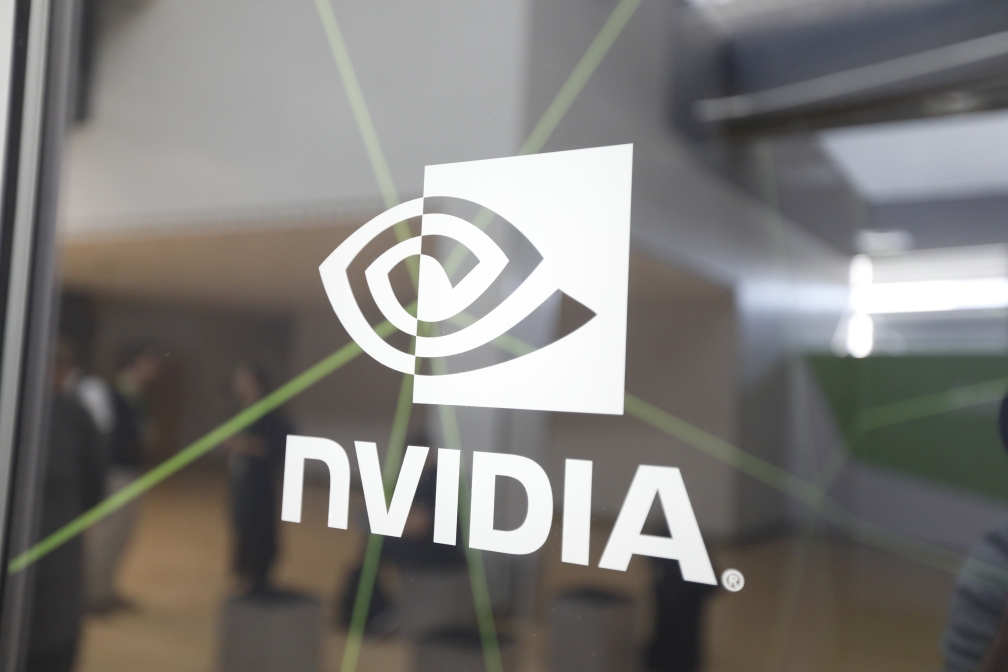 AI
AI
 AI
AI
 AI
AI
Nvidia Corp.’s data center unit posted record sales last quarter, but the chipmaker’s main revenue source continues to be its consumer business, which sells graphics processing units for playing video games. Today, Nvidia introduced a new technology called DLSS 2.0 aimed at strengthening its position in that market.
DLSS 2.0, is an artificial intelligence framework standing for Deep Learning Super Sampling that runs on the company’s RTX GPUs for personal computers. According to Nvidia, the software enhances the visual fidelity of games and improves performance by tweaking the way graphics assets are rendered.
To optimize a game with DLSS 2.0, Nvidia first runs it in a cloud-based sandbox powered by its DGX machine learning hardware. The company captures a set of ultra-high-resolution stills from inside the game and then takes a second set of lower quality images. The files are used to train an AI model, which learns to sharpen the lower-quality images in a way that brings them more up to par with the high-resolution snaps.
Nvidia packages up the model when training is complete and delivers it to consumers’ PCs via DLSS 2.0. The company says that DLSS can boost the quality of the graphics assets of a game rendered in 1080p, or full HD, by a factor of four, to 4K resolution. That’s twice as big as the the quality boost provided by the original release of DLSS Nvidia started shipping with its GPUs in 2018.
The chipmaker claims that the new iteration of the technology is more efficient as well. “A new AI model more efficiently uses Tensor Cores to execute 2x faster than the original, improving frame rates and removing restrictions on supported GPUs, settings and resolutions,” Matt Wuebbling, the head of marketing for Nvidia’s consumer GPU line, wrote in a blog post. Tensor Cores are specialized circuits brought over from the company’s data center GPUs that are optimized for running machine learning models.
Nvidia is also looking to make AI graphics optimization more accessible with DLSS 2.0. Whereas the previous release of the software required creating a separate AI model for each game, DLSS 2.0 uses the same general-purpose model every time, which makes the workflow simpler and could help widen the use of the technology among developers.
Nvidia will release DLSS 2.0 to customers this week in an update.
Support our open free content by sharing and engaging with our content and community.
Where Technology Leaders Connect, Share Intelligence & Create Opportunities
SiliconANGLE Media is a recognized leader in digital media innovation serving innovative audiences and brands, bringing together cutting-edge technology, influential content, strategic insights and real-time audience engagement. As the parent company of SiliconANGLE, theCUBE Network, theCUBE Research, CUBE365, theCUBE AI and theCUBE SuperStudios — such as those established in Silicon Valley and the New York Stock Exchange (NYSE) — SiliconANGLE Media operates at the intersection of media, technology, and AI. .
Founded by tech visionaries John Furrier and Dave Vellante, SiliconANGLE Media has built a powerful ecosystem of industry-leading digital media brands, with a reach of 15+ million elite tech professionals. The company’s new, proprietary theCUBE AI Video cloud is breaking ground in audience interaction, leveraging theCUBEai.com neural network to help technology companies make data-driven decisions and stay at the forefront of industry conversations.